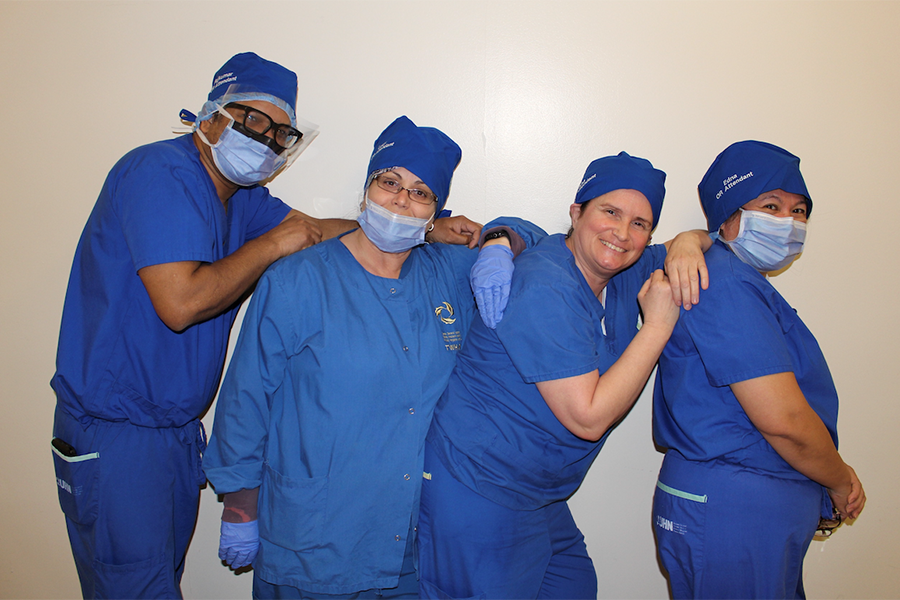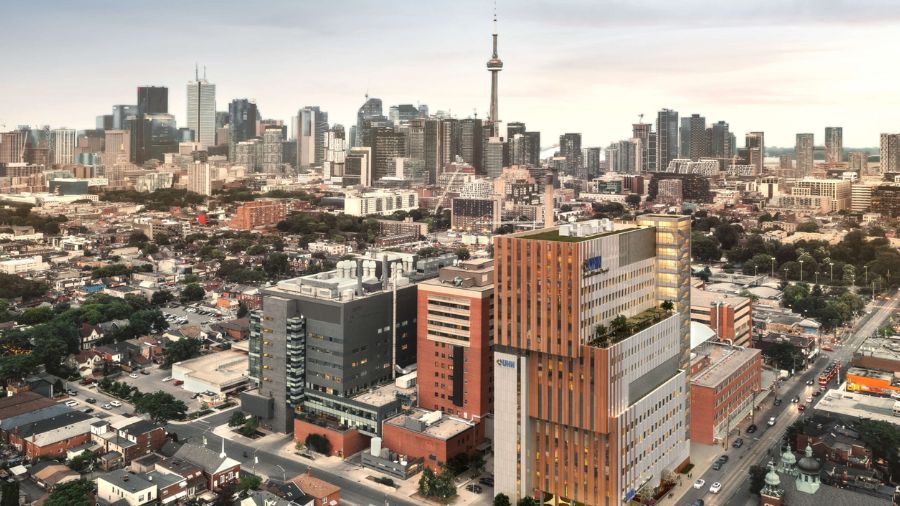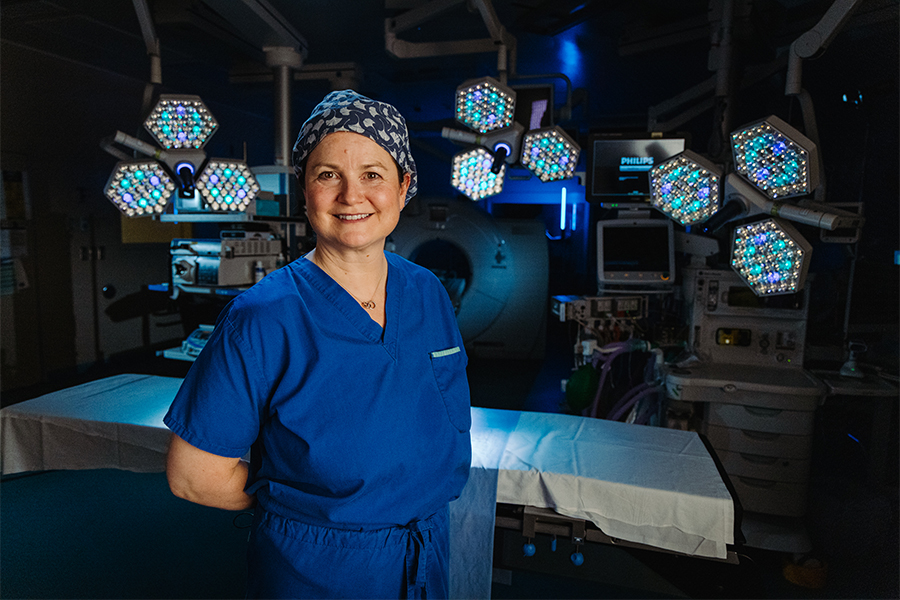Dr. Atul Prabhu (left) and Dr. Coimbatore Srinivas were part of the original 12-person Code Delta team. (Illustration: Made by Emblem)
By Derek Malcolm
In March 2020, Ontario hospitals began filling with COVID-19 patients, threatening to overwhelm intensive care units (ICUs) and their staff. They needed help, and at University Health Network (UHN) that help came in the form of the Code Delta team. The quick-response unit was assembled to take over the critical job of performing endotracheal intubations – inserting a breathing tube in the patient’s airway and placing the patient on ventilator support to assist with breathing. This intubation is a precise procedure that comes with an elevated risk of COVID-19 transmission, so it must be done quickly and safely. That’s why the Sprott Department of Surgery called upon its intubation experts in the anesthesia department to help bring Code Delta to life.
With most surgeries shut down, Sprott Surgery reached out to more than 70 people across UHN to volunteer for an early response intubation team. No one hesitated to say yes. Code Delta included roughly 25 anesthesiologists, 36 surgical nurses and 33 anesthesia assistants, as well as multiple attendants, pharmacy staff and operating room employees helping to organize the logistics that go into emergency tracheal intubations in the COVID era. In particular, this meant ensuring team members were dressed in personal protective equipment such as masks and gowns.
“The intention of Code Delta was to have a rapid, high-functioning team to go in and secure a COVID patient’s airway, because the risk of infection to staff around them is highest during this procedure,” says Dr. Coimbatore Srinivas, Site Chief of Toronto General Hospital in the Department of Anesthesia and Pain Management at UHN, and a member of the original 12-person Code Delta planning team that included leaders from across anesthesia, surgical services, critical care and nursing.
During each wave of the pandemic, the Code Delta team (named after the emergency code that rang out through the overhead speakers at the hospital to mobilize them) performed intubations on critically ill COVID-19 patients whose conditions had worsened to the point of needing a ventilator to survive. “As anesthesiologists, performing endotracheal intubation to assist with patients’ respiration is a standard part of our practice,” explains Dr. Srinivas. “But with COVID, the patients are extremely sick, and we’re working in an infected environment where droplets can spread to staff. Code Delta has helped immensely.”
70+
Source: UHN
Number of people across University Health Network who volunteered for Code Delta.
When a Code Delta is called, a team of five – one anesthesiologist, an anesthesia assistant, two nurses and an attendant – rushes, with all the necessary equipment, to wherever the patient is. Only the anesthesiologist, anesthesia assistant and one nurse enter the patient’s room to perform the intubation, while the nurse outside acts as a safety officer who carries out the critical role of ensuring that all staff are functioning according to the highest safety standards.
Intubation is only part of their job, though. Helping patients get through such a harrowing time is another. “It’s never far from your mind that you may be the last person patients see before they go under for the placement of the endotracheal tube,” says Dr. Atul Prabhu, Site Chief of Toronto Western Hospital and Deputy Anesthetist-in-Chief of the Department of Anesthesia and Pain Management at UHN. “It’s important to make an instant connection with the patients and reassure them that we’re going to look after them.”
Over the last 18 months, the Code Delta team carried out hundreds of intubations, but importantly, it proved how much can be done when people pull together. “Code Delta has strengthened the camaraderie that exists between teams and has provided a better understanding of how, working together, we can rapidly and efficiently accomplish the most difficult tasks,” says Dr. Prabhu. “There’s greater appreciation for our interdependencies during a difficult time. Staff well-being and patient care have improved because of it.”


